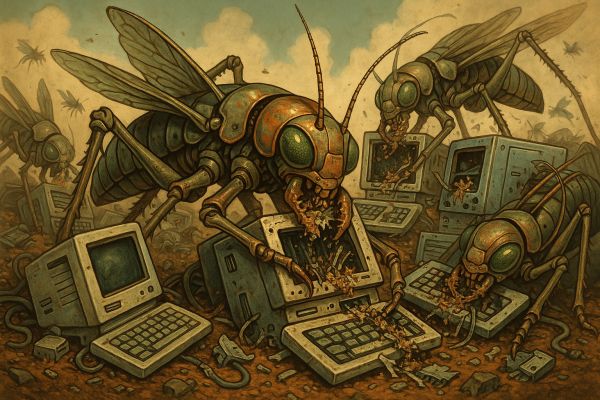After a year of intense development, Microsoft has finally unveiled Babylon.js version 8.0. This new release brings several advanced features that enable faster, more visually appealing, and interactive web experiences. IBL shadows create more realistic environment lighting, while area lights allow for simple yet effective 2D lighting effects. In addition, the Node Render Graph—introduced in its alpha stage—gives developers full control over the rendering process, and the new Lightweight Viewer and WGSL Core Engine shaders help reduce development time and boost performance.
Babylon.js was launched in 2013 when Microsoft’s David Catuhe began developing the web 3D rendering engine as a side project. Since then, the engine has grown to include support for VR, gamepads, and IndexedDB, which has helped it gain a place in several well-known projects. The technology has been used in popular applications such as Ubisoft’s Assassin’s Creed Pirates browser game, the Roll20 virtual tabletop role-playing platform, Space Jam: A New Legacy’s mixed-reality experience, and the IKEA Place AR app. These examples show that Babylon.js is used in many areas of digital entertainment—from games to e-commerce—and is recognized by major companies for its reliability.
New Features in Babylon.js 8.0
With the new IBL Shadows feature, Babylon.js now offers even more realistic lighting. Previously, Image-Based Lighting allowed you to simulate ambient light from a source image, but with the addition of shadows, lighting effects become much deeper. Developers can now create a movie-like look by combining light and shadow, and the improved technical background also speeds up rendering. This technology gives developers more creative options for using light in their scenes.
One of the most requested innovations is the introduction of area lights. This feature lets developers define 2D shapes that emit diffuse light. The result is dynamic lighting that is easy to set up while still capable of creating complex moods and shadow effects. This solution makes scenes look more realistic without requiring complicated configuration steps.
The Node Render Graph, now in its alpha stage, is a breakthrough in customizing the rendering process. Previously, Babylon.js’s rendering worked like a “black box,” with internal processes hidden from developers. Now, with visual scripting, developers can adjust each step of the rendering process without needing to dig deeply into the code.
The all-new Lightweight Viewer makes it quick and simple to display 3D models on web pages. This tool combines the power of the Babylon.js engine with a compact solution, significantly reducing load times without sacrificing visual quality. With the Viewer Configurator, users can easily tailor the tool to match the design and needs of a website. This enhancement makes Babylon.js even more versatile for both simple presentations and complex interactive applications.
The addition of WGSL Core Engine shaders also improves WebGPU support. Previously, Babylon.js shaders were only available in GLSL format, which needed an extra conversion layer for WebGPU. Now the engine supports WGSL natively, allowing developers to choose between the two languages without increasing project size due to a conversion library. Furthermore, the Node Material Editor now lets developers create custom WGSL shaders, adding even more flexibility to the engine.
Overall, the new version has been well received by the professional community, and its new features are seen as a significant improvement. However, the project does have some weaknesses, such as the community-maintained Babylon.js editor. Unfortunately, instability and rendering errors still occur in some areas. There is also room for performance improvements, as the default settings sometimes result in slower rendering compared to alternatives like Three.js. Additionally, shader debugging remains cumbersome and lacks intuitive tools like print() or step-by-step debugging.
Even with these issues, Babylon.js 8.0 remains one of the most innovative JavaScript-based 3D engines. Although Three.js is often considered easier to learn and has a larger community, Babylon.js is unbeatable when it comes to VR/AR and high-end graphics effects.

































